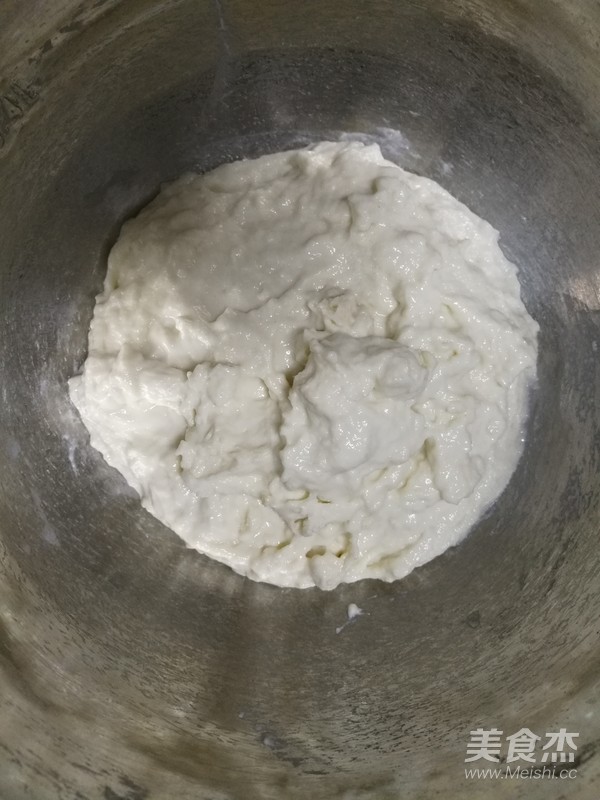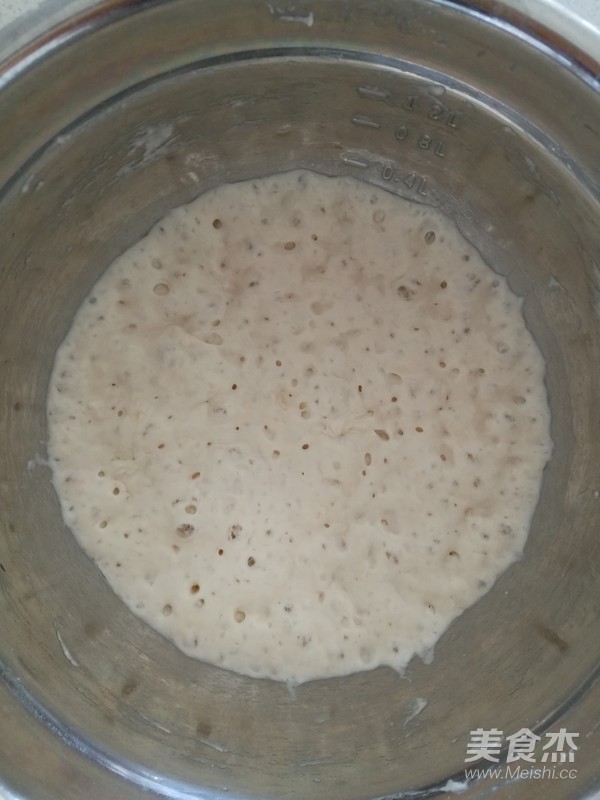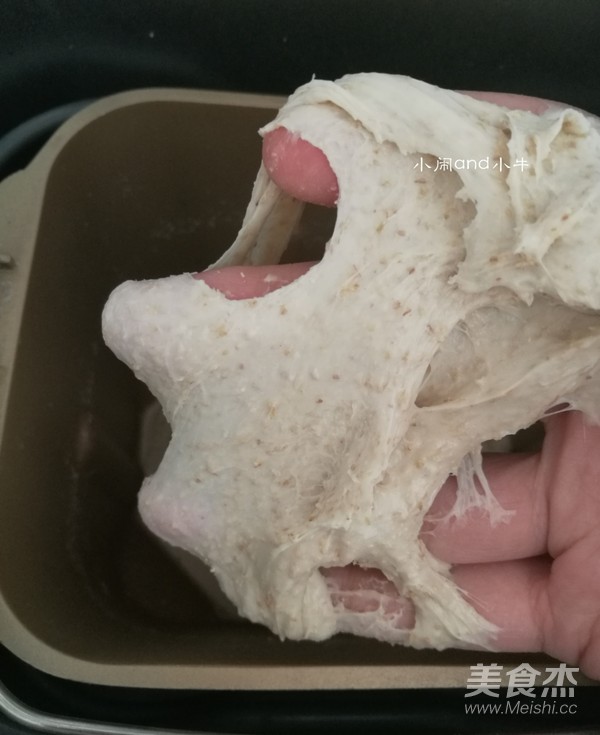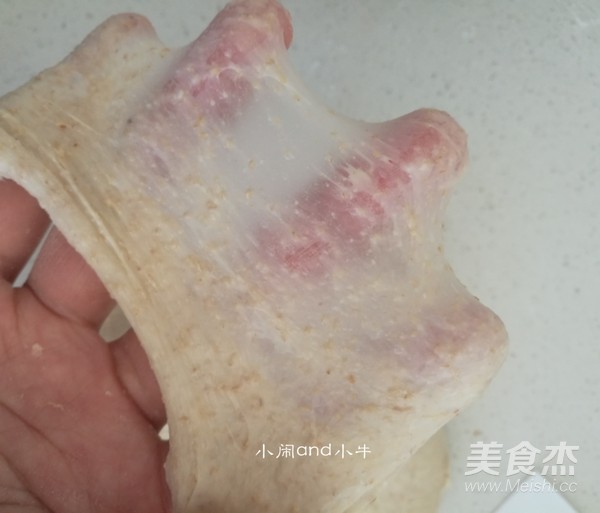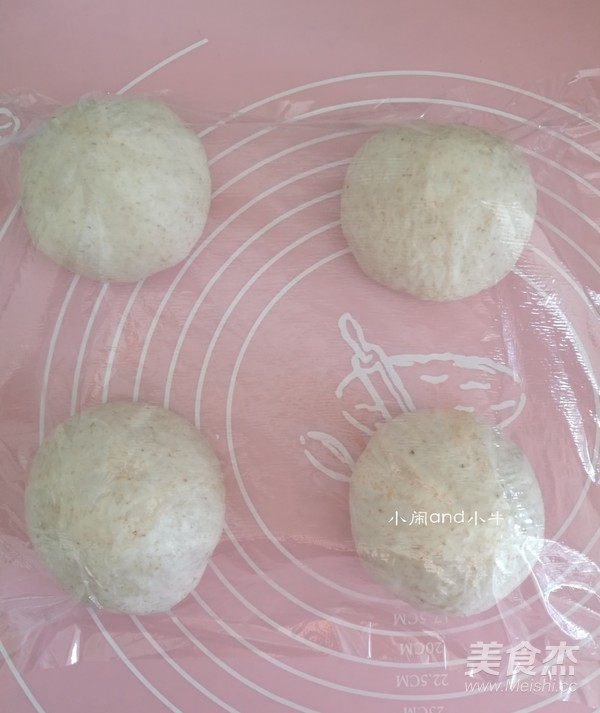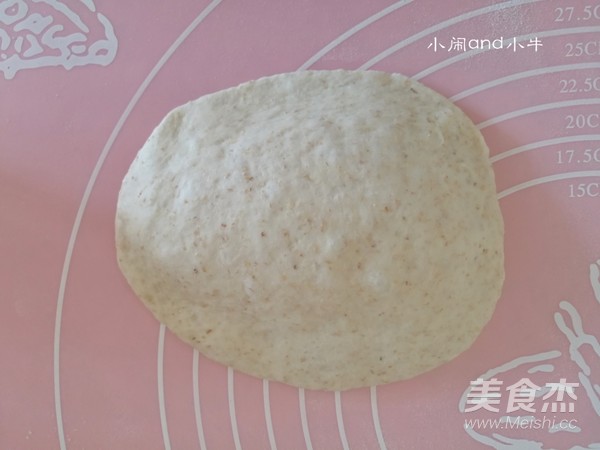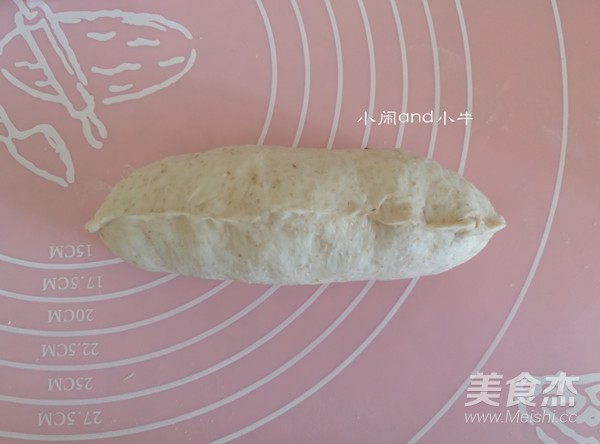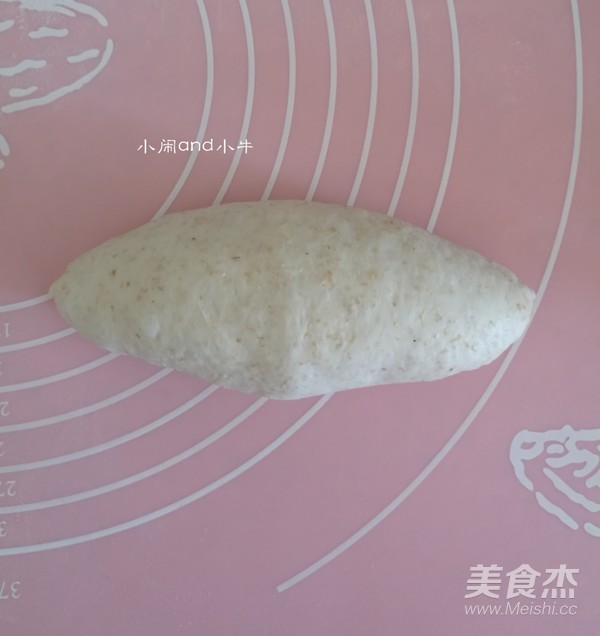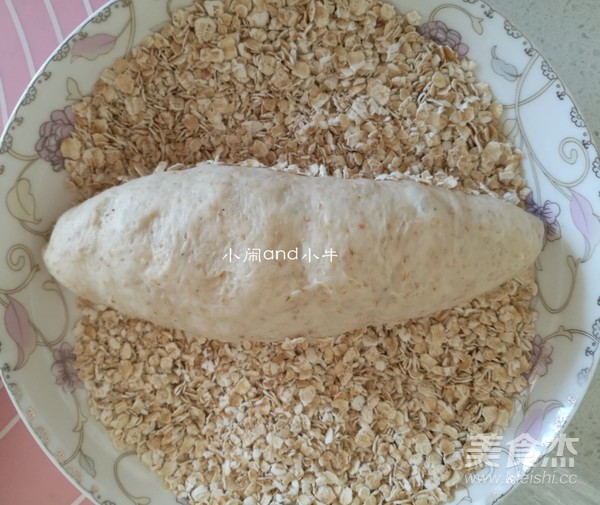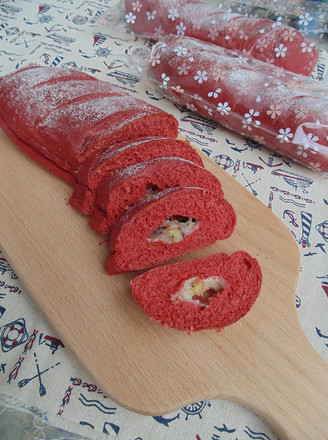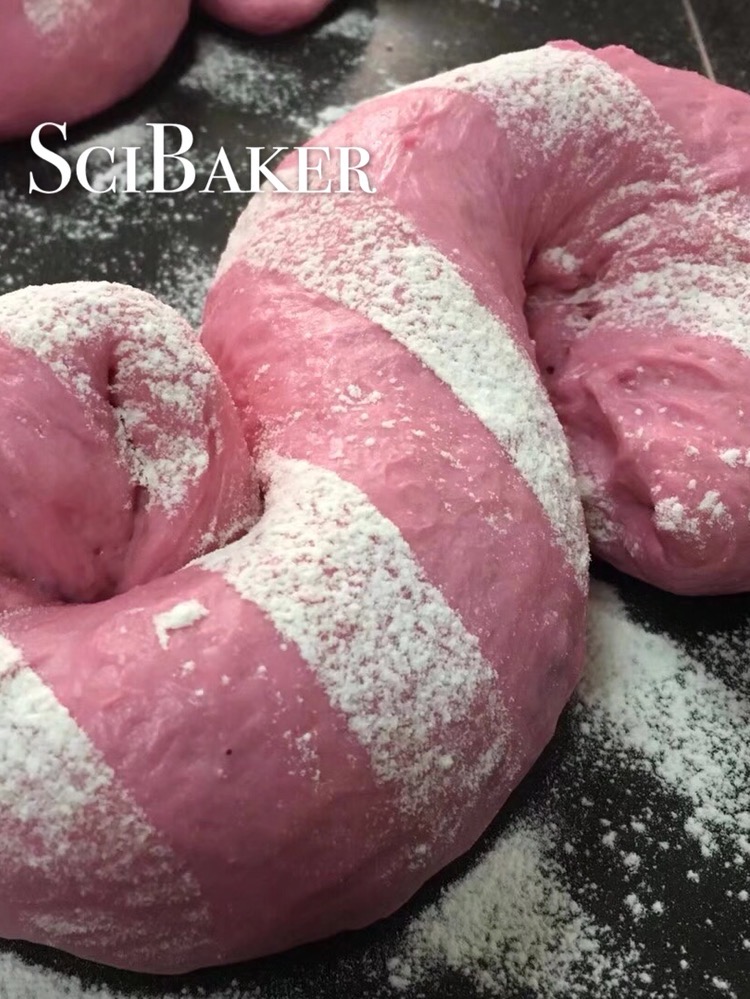Old-fashioned Oatmeal Bread
1.
Melt 1 gram of yeast with water first, and then mix it with high-gluten flour until there is no dry powder. You can use a manual whisk, no technique is required
2.
After mixing, cover with plastic wrap and ferment at room temperature for 15 hours. If the room temperature is low, the time will be extended. There will be many bubbles on the surface of the old noodles after fermentation.
3.
The butter is softened at room temperature for later use. Put the liquid part of the formula and the old noodles in the bread bucket. Gluten flour, whole wheat flour, sugar, salt, skimmed milk powder, dry yeast, start the kneading program, stop kneading when the dough can pull out the rough film
4.
Add butter that has softened at room temperature, continue to start the kneading process, knead until you can pull out a smooth glove film
5.
Take a clean stainless steel basin, smear a little oil on the inner wall of the basin, take the dough out of the bread machine, and make it slightly round, with the mouth down, cover with plastic wrap, and carry out the first fermentation (room temperature). The temperature is too low, please put it in the bread machine or fermentation tank to ferment, put it in the bread machine to ferment, I will cover a damp cloth to prevent water loss, we use the index finger to stick the flour on the fermented dough, and poke a small hole in the middle of the dough. The surrounding dough will be fermented without shrinking. The fermentation time is still determined by the state of the dough. The room temperature of my house is 25 degrees, and the time I use is 1 hour.

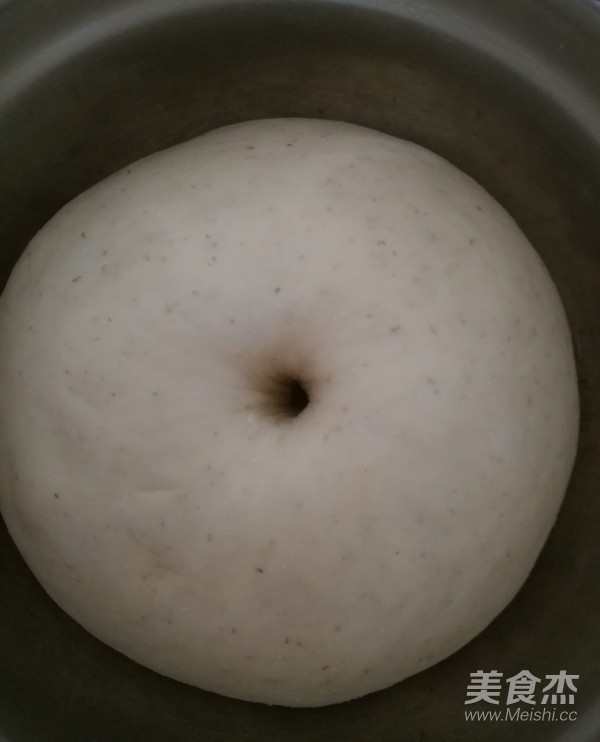
6.
Take out the fermented dough and place it on the panel gently to avoid exhausting air. Then divide the dough into 4 equal parts, shape and round it slightly, don't knead it too much, close it down, cover it with plastic wrap, and carry out the second fermentation (Wake up), 30 minutes
7.
Sprinkle a little hand powder on the panel, not too much, just don't stick to the panel. If it is too much, it will affect the shaping and the taste of the bread. Take a awake dough and place it on the panel and gently tap it with your hands. When tapping the dough , The palm of your hand should be slightly arched upwards, and the dough should be slapped into a thin shape on both sides and thick in the middle.
8.
Then turn the dough over and roll up the dough from top to bottom
9.
The final closing must be squeezed tightly
10.
Then use both hands to turn the dough up and down while shaping it into an olive shape with the middle high and the two low sides
11.
Spray water on the surface of the shaped dough, pinch the bottom of the dough, put the dough in a plate with oats, cover it with oatmeal, and place it in a baking tray for the final fermentation. I usually put it in the oven. Put a cup of hot water in the oven (the temperature of dough fermentation is 35-37 degrees, the humidity is 80%), the time is 45 minutes, the volume after fermentation is close to twice the size of the original dough, because it is baking During the process, the dough will still expand. Don't ferment too much, or the shape of the bread will make you dumbfounded.
12.
Then use a sharp blade to cut the bun at 45 degrees on the surface of the bread. If you over-ferment and the dough expands too much during the final fermentation, it will collapse for you when the bun is cut. The oven is preheated by 180 degrees and the middle layer is 20 minutes ( Adjust according to the temperature of your own oven), and let it cool for later use

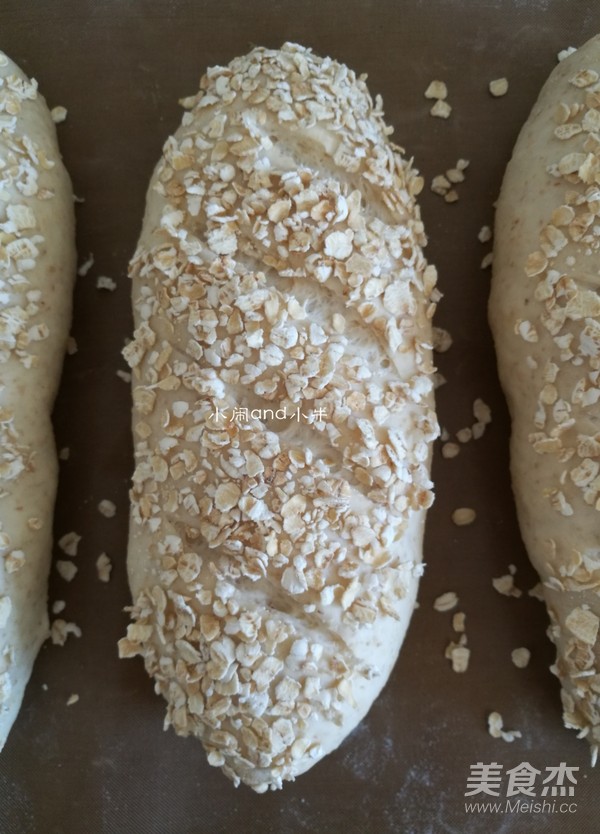
Tips:
1. The old noodles can be stored in the refrigerator if they are not used up, and used up within 5 days. It is best to throw it away if it is not used up for more than five days. If you want to use it all the time, you can add noodles and water to replant. For example, if the remaining old noodle weight is 100 grams, then on the fifth day you can add 50 grams of flour and 50 grams of water, and continue to ferment for 15 hours.
2. I will open the lid of the bread machine to make the dough, so as to avoid the heat generated by the rotation of the machine and cause the dough to ferment in advance
3. Because the power of each machine is different, so you can set the time according to your own machine, subject to the state of the dough


